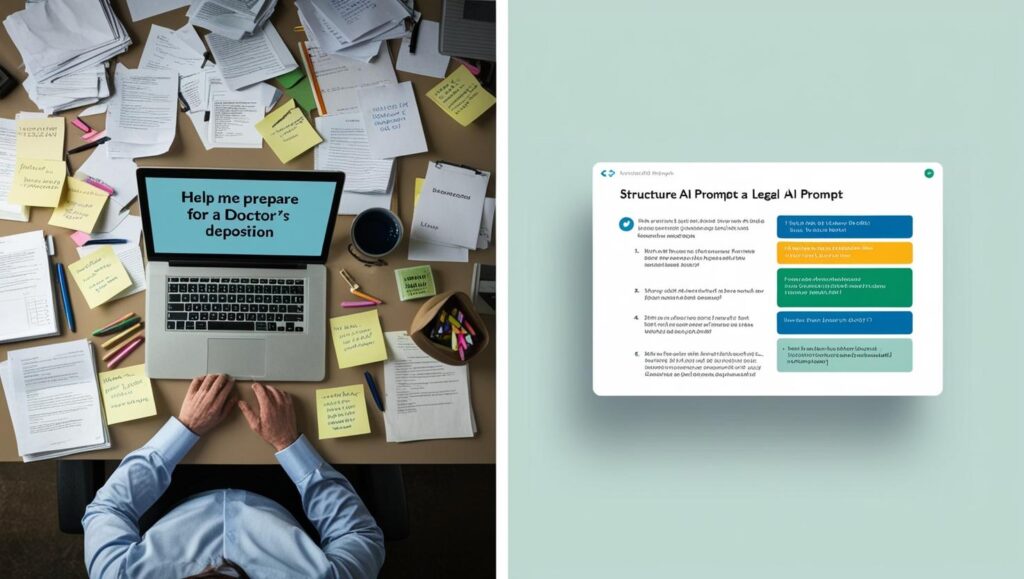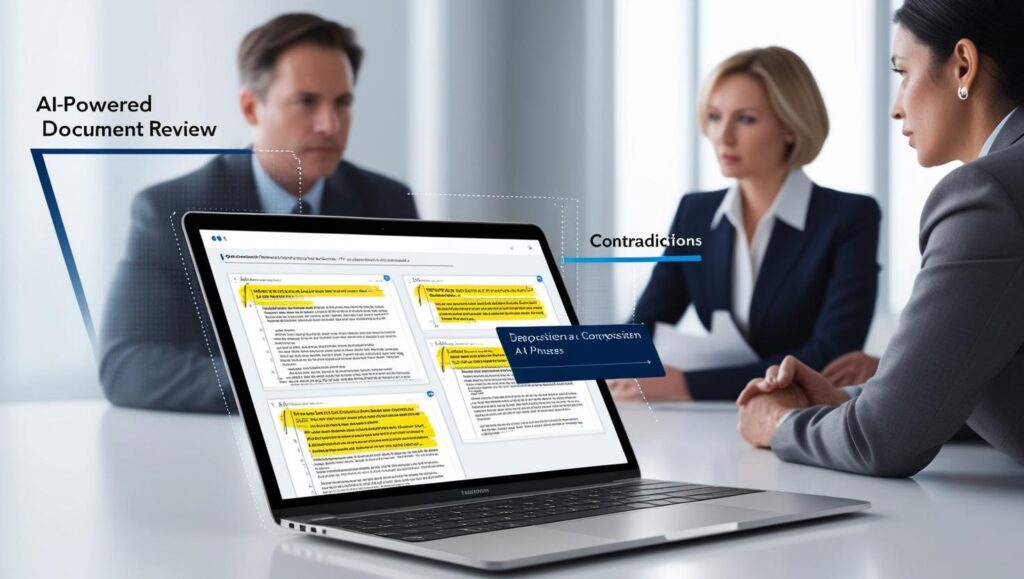Legal professionals can significantly enhance their productivity by effectively using AI platforms. This guide outlines best practices for crafting prompts that deliver precise, valuable results.
1. Be Specific and Contextual
Provide relevant context and specify exactly what you need. The more specific your request, the more tailored/ actionable the response. Vague queries produce generic information.
Effective Prompt:
Review this medical record excerpt from a potential nursing home neglect case in Florida. The patient developed stage 3 pressure ulcers after 3 weeks in the facility. Identify potential violations of care standards, key documentation gaps, and three specific questions I should ask during the facility director’s deposition.
Ineffective Prompt:
What are the facts in these medical records that I can base on in filing a nursing home abuse lawsuit?
2. Structure Complex Requests into Sub-questions
For multifaceted legal questions, break down your request into clear steps or components. Structured prompts guide the AI to provide comprehensive responses addressing all aspects of complex legal tasks.

Effective Prompt:
I need to prepare for a deposition of a neurosurgeon in a medical malpractice case involving a delayed diagnosis of spinal cord compression: (each question below is a separate entry in our Adv Doc Review)
- Q1: List 10 essential questions about the standard of care for reviewing and acting upon MRI results showing potential cord compression
- Q2: Provide strategies for addressing inconsistencies between the doctor’s notes and the patient’s reported symptoms
- Q3: Outline potential objections defense counsel might raise during questioning about causation and how to respond
Ineffective Prompt:
Help me prepare for a doctor’s deposition in my malpractice case.
3. Optimize Document Review
Use AI to efficiently extract and organize key information from large document sets, with specific document review instructions.
Effective Prompt:
Review these 5 deposition transcripts and extract key statements related to the timing of medication administration and documentation of vital signs. Identify any contradictions or inconsistencies among them, showing who says what in which document. Organize findings by witness and timestamp, highlighting where accounts differ regarding xxx incidents.
Ineffective Prompt:
Summarize these 5 depositions for my medical malpractice case.
4. Request Comparative Legal Analysis
Frame prompts that leverage the AI’s capabilities in understanding legal concepts across jurisdictions.

Effective Prompt: You can ask the following in our Research Module. Better results with more case facts.
Compare and contrast the “standard of care” requirements in nursing home neglect cases across three states where we practice (FL, NY, and NJ). For each state, provide:
- The specific statutory definition and requirements
- A few landmark cases that established key precedents for proving negligence
- The documentation typically required to establish violations of the standard of care
Ineffective Prompt:
How does the standard of care work in nursing home cases?
5. Develop litigation strategy by including Decision Criteria
Different legal strategies have varying strengths based on specific goals and circumstances. Providing criteria helps the AI evaluate options against relevant factors and optimize recommendations.
Effective Prompt:
For a personal injury case involving a 45-year-old client with a traumatic brain injury from a commercial truck accident with disputed liability, outline three potential litigation strategies. Compare them based on: likelihood of summary judgment, potential damages ranges based on similar cases in this jurisdiction, and expert witness requirements for establishing causation and future care needs.
Ineffective Prompt:
What’s the best way to handle this personal injury case?
Final Recommendations
1. Iterative Approach: Start with a well-formulated prompt, then refine based on the initial responses, leveraging our AI’s suggested additional questions to “peel back the onion”.
2. Verification: Check details on the cited rules inside the “Reference” section of our legal research, to ensure they look accurate.
3. Ethical Boundaries: Remember that AI should assist with legal research and drafting but not replace professional judgment or attorney-client relationships.
By following these guidelines, legal professionals can harness AI capabilities effectively while maintaining the high standards required in legal practice.


